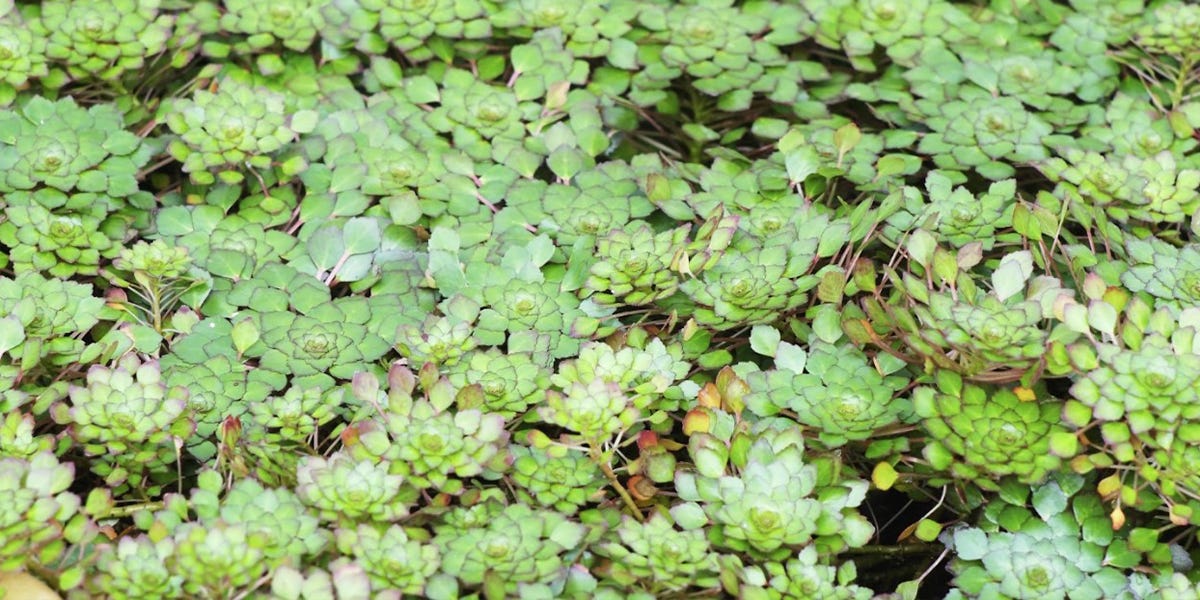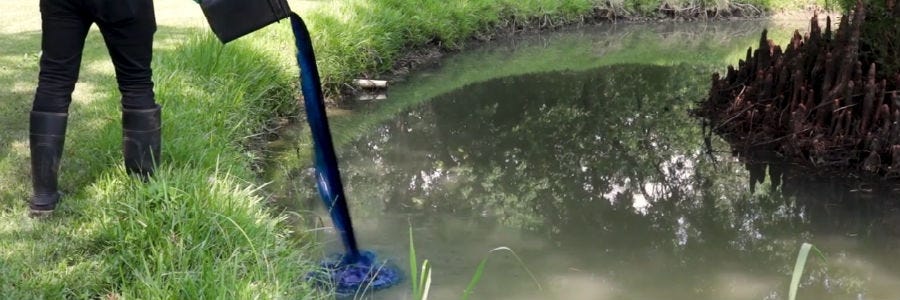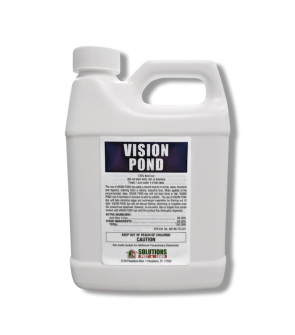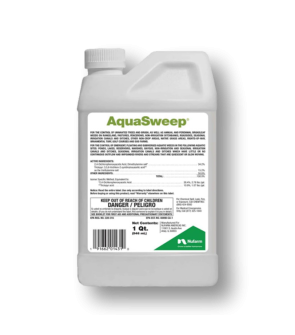Gain access to personalized product screening, the best pricing, rewards, and more!
Most Effective Products
Water Chestnut Control: How To Get Rid of Water Chestnut
The Water Chestnut is an annual, rooted floating leaved non-native plant that can form dense mats at the waters surface which are hard to penetrate. Native from Asia, Australia, Africa and various islands of the Pacific and Indian Oceans, the water chestnut made its way to North America and is present in the northeastern United States where it's known for clogging waterways and ponds and altering aquatic habitats.
Water chestnuts are known for spreading rapidly wherever established. Reports have stated that merely one acre of Water Chestnut on a wetland can spread to 100 acres within one year. This means that without chemical intervention to control the weed, Water Chestnut will often dominate ponds, shallow lakes and rivers.
Water Chestnut is of little value to wildlife or fish and will eliminate most recreational activities, including swimming, fishing, and boating. The rapid growth of Water Chestnut will also drive out native plants.
If you have a Water Chestnut problem on your aquatic property, this step-by-step DIY guide can help you in the form of effective aquatic herbicides and helpful how-to advice from experts.
Identification

Water Chestnut has green floating leaves that are triangle shaped and are between 2 to 4 cm wide. These leaves form rosettes, which are attached to the main stem by an inflated petiole (leaf stem). The upper side of the leaves is waxy and shiny and the underside is coated with fine hairs.
An air bladder is located at the base of the floating leaves, and the leaf margins are wavy. Leaves that are submerged underwater are feathered and whorled around the stem. The slender stems can reach lengths of 15 feet.
Using this description and image will help you to identify whether the weed growing in your pond is water chestnut. If you are having trouble identifying the plant, contact us and we will do our best to ID the weed you have and offer control suggestions.
Inspection

Where to Look
Walk around your lake or pond and determine how big of a water chestnut problem you have. You should also take into account how the lake or pond is utilized not only by humans but also by the fishes and aquatic life that inhabits the water. Asking yourself these questions and weighing the pros and cons of control before proceeding is a highly recommended task.
What to Look For
If you have water chestnut on your pond, it's hard to miss it. You will see the plant in large numbers of their rosettes bunched up on the water surface.
Treatment
When handling any chemicals it is vital that you first put on the proper personal protective equipment (PPE) to protect your face, eyes, mouth, hands, feet, and skin.
Unfortunately, there are not many aquatic herbicides labeled specifically for water chestnuts. Products containing 2,4-5 or glyphosate as its active ingredient will help to suppress dense water chestnut infestations.
Glyphosate 5.4 Aquatic Herbicide is a broad-spectrum post-emergent herbicide that will help to control listed weeds within 2 to 4 days. It is not specifically labeled to treat water chestnuts, but has the active ingredient glyphosate 53.8% which helps to control a large variety of aquatic weeds.
Before application, coordination and approval of state fish, game agency, and local water authorities may be required, either by letter or agreement or issue-ment of permits for aquatic applications to public water. This product may not be applied within 1/2 mile upstream of an active potable water intake in flowing water or standing body of water.
Step 1 - Mix and Apply Glyphosate 5.4 Aquatic Herbicide
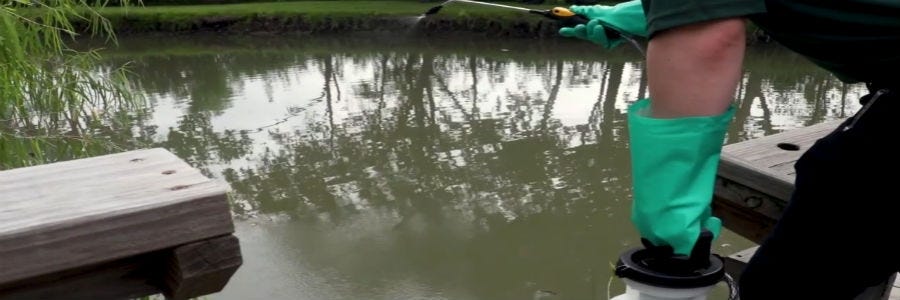
Determine first how much Glyphosate 5.4 Aquatic Herbicide you need by measuring your pond. For aquatic applications, you will need to calculate the surface area by measuring (in feet) the area length and width and multiplying the two values (length x width = surface area). You should also calculate volume of your pond or water body by measuring and multiply length x width x depth.
For a general 1% dilution ratio, mix Glyphosate 5.4 Aquatic Herbicide at a rate of 1.33 ounces per gallon of water. The maximum application rate of 7 1/2 pints per acre must not be exceeded in any single broadcast application that is being made over water.
Using a backpack sprayer or hand-pump sprayer, apply the Glyphosate 5.4 Aquatic Herbicide to your pond or lake during ideal temperatures (when water temperatures are about 50°F or more during Spring or early Summer). Use a fan spray nozzle to ensure an even coating on the water surface so it thoroughly covers the Water Chestnut.
Step 2 - Hand Pull Resistant Weeds
Wearing chemical resistant gloves, hand pull any remaining water chestnuts that may have not completely wilted or become discolored.
Prevention
To keep Water Chestnut from returning on your pond, we recommend applying Vision Pond Dye. Vision Pond Dye hinders plant development by blocking sunlight into the water and also gives your pond a clean blue color.
Measure the appropriate amount of Vision Pond Dye into a bucket based on your pond area measurement findings. The label recommends applying at a rate of 1 quart per 1 surface acre of water at a 5-foot average depth.
Pour the pond dye over the edge directly into the body of water and the water's natural movement will disperse the dye.
Key Takeaways
- Water chestnut is an aquatic weed known for creating large mats that can overtake a pond.
- Applications of Glyphosate 5.4 Aquatic Herbicide has proven to work best against Water Chestnut and will kill growths quickly.
- Applying Vision Pond Dye after a herbicide application works as a great preventative measure that prevents water chestnut growth and improves the look of your pond.






